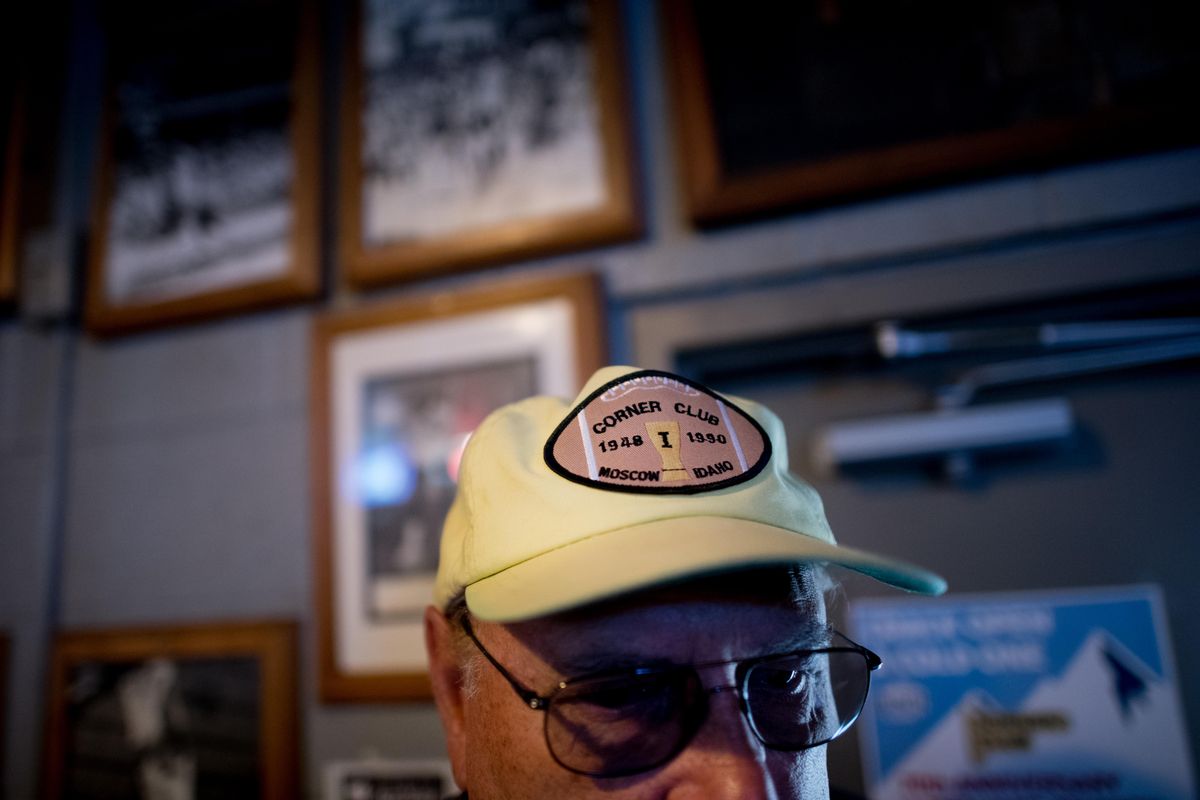John Blanchette: Corner Club cornered market on true-blue Vandals

MOSCOW, Idaho – Corner Club stories?
There are too many – the place is 70 years old, after all. Also not enough – the place is still only 70 years old.
If you’ve never been, you have a lot of catching up to do.
But as heart-and-soul tales go, Marc Trivelpiece has the best one. He met his wife Stacey there while he was tending bar and she came by to drive her friend home. So how could they not double-back eight years later and buy the place?
Plus, his story is verifiable. Doubtless there are many being told this weekend that are apocryphal or outright fabrications. But that’s what reunions are for, and the Trivelpieces are throwing a doozy suitable for a civic icon. There’s the marking of the 70th anniversary of the bar – though technically, that was July 23. There’s a gathering of 20 or so alumni bartenders and servers dating back almost 50 years. One, Jim Patterson, wandered into a surprise 50th birthday party in his honor Saturday afternoon.
And in the middle of it all, Jerry Kramer was inducted into the Pro Football Hall of Fame.
The connection is hardly hollow.
Kramer is arguably the University of Idaho’s most recognizable athletic grad – and the Corner Club is very much a Vandal bar.
The Vandal bar, rather.
As reaffirmed by the décor and the dominant attire. Or the fact that, before Kramer’s visage took over the seven flat screens, someone led a rousing chant of “Who do we hate? Boise State!”
Is that a prerequisite for owning the joint?
“It will be for me when it’s time to let this place go,” Trivelpiece said.
Before there were sports bars – yes, there was such a time – there were just bars. That’s what Hermie Goetz and partner Neal Lynd opened in 1948 on the corner of Main and East A for a clientele of mostly farmers and laborers. The campus crowd found its fun elsewhere.
That began to change when Goetz summoned his son Dave to help run the place. The coffee pot was still on for the locals at 7 a.m., but over time you could find the odd law student poring over his civil procedure notes in midafternoon while the barkeep poured him a 32-ounce “tub” of Rainier – followed by “the Greeks and the GDIs” at night, Trivelpiece said.
(God-damned independents, if you’re scoring at home.)
In 1981, the current cinder-block bunker (“1,800 square feet of heaven”) went up. A year or so later, progress – the rerouting of U.S. 95 – wiped out both the corner and the original structure which, among other things, had once been a chapel.
But the Vandals kept coming, especially after games.
“That was when basketball was going great,” recalled Dave Goetz, who drove up from Orofino for Saturday’s party. “I had both places going and I used to have to stand at the front door with the door open at 8 below with my feet freezing to the floor to tell people there’s no more room.”
The club’s defining lore, of course, was Gus Johnson’s nail – driven into a beam in the original bar at a point 11 feet, 6 inches above the floor where the Vandals legend and future NBA All-Star reached with a standing jump back in 1963. Hermie Goetz’s offer of free drinks for anyone who could duplicate the leap went unfulfilled for 23 years until the bus of the College of Southern Idaho basketball team pulled up across the street and Joey Johnson – brother of Seattle SuperSonics great Dennis – bent the peg on his third try.
Gus’ picture remains prominent by the north door. Just outside, the legend lives on – a block on the wall painted black way up above the safety light.
But the museum quality of the Club has only grown since Goetz sold the bar in 1991 to Mike Curtis and Melinda Melton, who sold it to their old bartender and his wife in 2007. Kramer’s Idaho jersey looms large on one wall, opposite one of the infamous cheerleader outfits from 2008 that were dumped after blue-nosed fans complained about their yell leaders looking like “pirate hookers.”
The memorabilia doesn’t muffle the echoes.
“My favorite nights were football nights,” said Mike Murphy, a bartending alum, “before it got so politically correct that coaches get ostracized for showing up in a bar. Nick Holt would come in, get up on the bar and lead the fight song. He didn’t stay and drink. He just came in because it was packed full of fans and former Vandals and to show his appreciation – like Dennis Erickson and John L. Smith did before him.”
Cellphone cameras and social media ended that. But the party goes on.
“At homecoming and other games, this is where they come,” Melton said. “They’ll probably wander off someplace else, but they always come here.”
Because?
“It’s tradition,” said Meghann Kolb, who came from Coeur d’Alene in 2007 to attend Idaho and has done multiple stints as a bartender, “and Vandals are thoroughly engrained in tradition. You’ve got a place where your mom, dad, your grandfathers and grandmothers met and spent some of the best years of their lives. You’re in a place that feels like family, immediately.”
Up on the TVs, Kramer tilled similar soil in his Hall of Fame remarks.
“The feeling of ‘team’ is wonderful,” he said. “It’s the reason most of us play – because there’s a team there. We want to be part of the team.”
At the Corner Club, every Vandal can be.